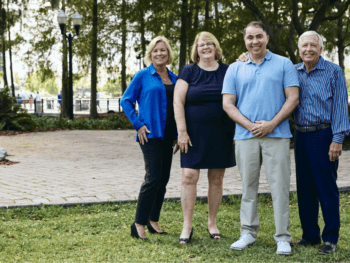
Caring for workers who are diagnosed with COVID-19 — especially those who already have a catastrophic or complex injury takes a special skill set and multiple clinicians with various areas of expertise working in collaboration. Organizations that already have extensive experience in helping injured workers with a multitude of severe conditions, both physical and emotional, are best situated to meet the needs of workers affected by the current pandemic.
Organizations need to look beyond the traditional models of medical care delivery and find new solutions to help injured workers with COVID-19. From the initial diagnosis, through the healing process and finally a return to function, providers need to establish a treatment plan with specific clinical and time-based outcomes for these individuals.
Click Link to Access Free PDF Download
“The 6-Step Process To Determine Workers’ Comp Injury Causation”
Effects of the Virus
COVID-19 affects people differently. While those who are older and have underlying comorbidities, especially diabetes, heart disease, and chronic lung impairments are more at risk, the virus can be incapacitating for people of any age or situation. Researchers are quickly trying to better understand the virus and why it affects some people differently than others.
The Centers for Disease Control and Prevention reports that the effects range from mild symptoms to severe illness and even death. The symptoms generally occur between 2 and 14 days after exposure. A variety of symptoms have been associated with the virus, but the main ones, according to the CDC, are:
- Fever
- Cough
- Tiredness
- Shortness of breath
Trouble breathing, persistent pain or pressure in the chest, confusion or inability to arouse and bluish lips or face require immediate medical attention and may result in hospitalization. For the many infected people who do not need hospitalization, recovering can be a lengthy and challenging process. Two studies from China reveal a general day-by-day breakdown of the progression of the virus:
- Day 1: Most patients will have a fever and feel tired. They may also experience muscle pain and have a dry cough. A small percentage may also have gastrointestinal effects.
- Days 2-4: The fever and cough persist. Those with high fevers may even experience hallucinations.
- Day 5: Breathing becomes difficult, especially for those who are older and/or have a preexisting condition.
- Day 6: Symptoms continue, often with the feeling of a tightening in the chest. Some have even said it feels like an elephant is sitting on their chests.
- Day 7: The symptoms may worsen, requiring hospitalization. For others, the symptoms gradually begin to dissipate.
The long recovery of COVID-19, compared to the healing time for a cold or flu, can be extremely unsettling for both the injured worker and his family. Going through the ordeal while also recovering from a catastrophic injury can be overwhelming. This is why it takes a special group of caregivers to generate the best outcomes.
Appropriate Care
Pairing up experts in pulmonary, infectious disease, neurological, cardiac, and behavioral components offer the best hope for injured workers with COVID-19. Finding a group of such specialists who already collaborate on workers’ compensation claims is best done by reaching out to organizations that work with catastrophically injured workers, and those with extremely complex situations. As stated by Kevin Turner, Chief Executive Officer, Paradigm Catastrophic Care Management, “The rapid spread of COVID-19 presents the workers’ compensation industry with a complex set of risk decisions and challenges that require clinical management resources that Paradigm has developed and evolved over the past 30 years of managing catastrophic injuries.” Employees with traumatic spinal cord, acute brain, severe burns, amputation, and multiple trauma injuries are best able to return to function when they have a dedicated group of specialists attending to their needs. These providers collaborate day in and day out to design and execute the best treatment plans for these injured workers.
In addition to the physical symptoms, the uniqueness of COVID-19 may also cause complications such as acute respiratory distress syndrome, post-intensive care syndrome, and associated post-traumatic stress disorder. Knowing this in advance helps the medical team mitigate and even prevent some of these challenges.
The Psyche Factor
Overwhelming stress and fear have a direct effect on the body’s ability to heal. The current virus is one of the scariest and most stressful situations for nearly everyone, especially those affected. It is imperative that an injured worker with COVID-19 gets appropriate care for his emotional well-being in addition to his physical needs.
Optimal care starts with communicating and providing accurate and timely information to injured workers with COVID-19. Nurse case managers must be continuously informed on the very latest information and guidance provided by federal, state and local governments as well as the latest scientific research, so they can accurately answer the many questions injured workers and their families are likely to ask.
Additionally, nurse case managers and others working with the injured worker must be up to date on the status of the worker’s medical providers. With some physicians closing their offices and/or using telemedicine, it’s imperative that the injured worker is kept updated on any such changes and understands his treatment options to avoid any disruptions in care management. Case managers and others also need to ensure there are no lapses in the worker’s medication regimen.
In addition to working with the injured worker, his family should also be kept in the loop. Those caring for the injured worker should make a special effort to include the injured worker’s loved ones in discussions about the patient’s needs and be willing to hear and address their concerns. Some organizations seek out community support specialists to work with patients and their family members during the recovery process.
Conclusion
The coronavirus pandemic has sent the nation and the world into unchartered territory. Many of us are now feeling the anxiety and fear that injured workers experience most or all the time. It is more important than ever to ensure injured workers with COVID-19 get the help and resources they need to make optimal recoveries.

Contact: mstack@reduceyourworkerscomp.com.
Workers’ Comp Roundup Blog: https://blog.reduceyourworkerscomp.com/
©2020 Amaxx LLC. All rights reserved under International Copyright Law.
Do not use this information without independent verification. All state laws vary. You should consult with your insurance broker, attorney, or qualified professional.
















